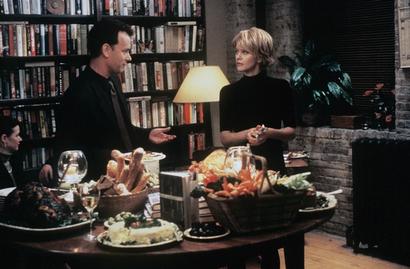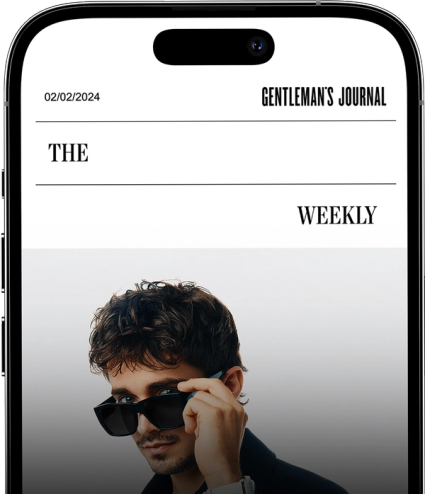

Can wearing the same thing everyday actually make you stylish?
Words: Jamie Millar
So uncompromising a design obsessive was Steve Jobs that the late Apple supremo lived (alone) for years without a sofa because he couldn’t find one that sat right with him. Even when married, he and his wife spent longer debating the relative merits of American and European washing machines – which, in case you’re wondering, boil down to speed versus efficiency – than they did the name of their firstborn child. As someone who has been well and truly ‘rinsed’ by my local laundrette in recent months, owing to my inability to find a model that doesn’t offend my aesthetic sensibilities, I have sympathy, if not downright admiration.
One thing that Jobs didn’t waste time or energy thinking about was what to wear every day. From his return to Apple in 1998 to his death in 2011 – ‘peak Jobs’, if you like – he adopted what became an iconic look, if not a particularly good one: black turtleneck, Levi’s 501s (the very Platonic ideal of a jean) and New Balance trainers. By the time his corporeal hardware failed, Jobs had been upgraded to the world’s most recognisable CEO if not its most consummate, known almost as much for his one-note wardrobe as his keynote speeches.
Photo: David Paul Morris / Getty Images
His much-maligned knitwear was actually supplied by the celebrated fashion designer Issey Miyake. Jobs had been inspired by a visit to Sony’s factories in Japan, where the surprisingly chic workers wore Miyake-made uniforms. His attempts to coerce Apple employees to do likewise were as successful as the iPod Photo, but he became convinced of the benefits of adopting a uniform in his own life: chiefly the convenience of not having to ‘outfit’ of a morning, and the solidifying of his personal brand. According to Walter Isaacson’s definitive biography – which, if you haven’t read, I heartily recommend – Miyake made a ‘Jobs’ lot of identical black turtlenecks – hundreds of them, according to Isaacson.
Jobs is by no means the only intelli-gent to subscribe to this theory of uniformity. Albert Einstein stocked up on several of the same grey suit to conserve brainpower; Mark Zuckerburg has done likewise with grey T-shirts, which if nothing else illustrates the widespread decline of sartorial standards.
Zuck was himself inspired by Einstein, Jobs and Barack Obama, who wears exclusively navy or grey suits in order to reduce the number of decisions he is obligated to make on a daily basis. The one time the US president deviated from this policy, essaying an ill-advised beige number for a press briefing on the more pressing matters of Ukraine and Syria, people were too distracted, tweeting puns like “Yes we tan” and “The audacity of taupe” to pay much attention to the world’s trouble spots. (Such was the scale of this international incident that The Daily Telegraph contacted me for my political style commentary.)
Photo: WENN
Alas, despite Miyake’s best efforts, stylishness does not number among these high achievers’ many accomplishments. True, Obama gets props for his habiliment, but really he just dresses well in comparison to other politicians; he’s competent at best. But contrary to first impressions, the notion of a uniform is not entirely alien from fashion. Designers like Tom Ford, Karl Lagerfeld and Michael Kors have made a virtue out of wearing the same clothes, cementing their image while freeing up some of the mental fibre-optic required to produce entire collections at a relentless pace that would exhaust lesser mortals. Indeed, psychologists refer to the phenomenon of ‘decision fatigue’. You start each day with a finite quantity of willpower. Squander it staring blankly into your wardrobe of a morning, towel dripping on the carpet, and your ability to choose wisely will ebb away. A uniform then can make dressing better easier, while increasing your chances of success in other areas of your life – not least because you’ll be better dressed. But wear exactly the same clothes every day and you’ll be perceived as eccentric at best, unhygienic at worst.
The trick is to adopt the principle of uniformity, not the appearance. Perhaps you’re in the market for a particular item, or you’re just newly resolved to smarten up your act. Either way, when you find something you like, buy multiples – in different colours, Cowell. Suits? Buy two: navy and dark or mid-grey (or even two of each if you can afford them). Shirts? Buy ten (two working weeks’ worth) in a mix of white, blue and perhaps pink if you’re feeling saucy. Shoes? Buy at least two pairs: one black and one dark or maybe mid-brown. (Tan is too light for dark suits.) Throw in a couple of knitted ties in say, navy, charcoal, olive green or burgundy (always a shade darker than the shirt) and bingo: you can wear effectively the same thing every day without ever looking the same. Sure, the initial outlay will be far greater, but so will the lifespan of your purchases, as opposed to wearing unique acquisitions into the ground – and being bereft when they’re not clean. Plus you can maintain the consistency required to rebrand as debonair.
Ultimately, you want to have options, but not so many that you’re paralysed. I recently instituted a rule whereby I only buy clothing in navy, grey, olive, burgundy or camel, and all my accessories in black, the reason being that everything goes together. I even restocked the entire contents of my underwear drawer at a stroke after growing tired of trying to coordinate with my socks, and those with the rest of my outfit. Anal-retentive, yes; trivial, no: it’s a real cognitive load off. I’ve also applied the same rule to my gym attire to eliminate the excuse of clashing kit. But one resolution at a time, gentlemen.
Main and featured image: Justin Sullivan / Getty images
This article is taken from our January/February issue. Subscribe here.


